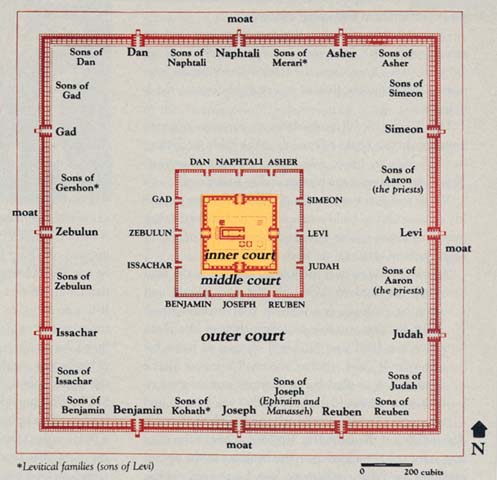The Plan of the Essene Temple
Sidebar to: The Temple Scroll—The Longest and Most Recently Discovered Dead Sea Scroll

Following elaborate instructions in the Temple Scroll, Yigael Yadin prepared these plans of the Temple that the Essenes hoped would be built in Jerusalem. “To build the Temple in Jerusalem,” notes Yadin, “was one of the most important tasks enjoined upon the Israelites in the wilderness.” But strangely enough, there are no laws in the Bible detailing how the Temple is to be built, although the Tabernacle and its furnishings are clearly described.
The Essenes in their own “Torah,” the Temple Scroll, assigned nearly half of the text to plans for the Temple and to the laws associated with Temple rites.
Yadin is convinced that the Temple concept of the scroll’s author “is based on the design of the camp of Israel, set around the Tabernacle in the wilderness, according to tribes and Levitical families.” “It was this view,” observes Yadin, “and the Biblical mention of the Temple courts of both the First and Second Templesk that formed the basis of the descriptions of the Temple and its courts in the scroll.”
The cardinal prescription of the scroll is that there shall be three square courts around the Temple inner, middle and outer. (The plan of the Temple and its three courts is on the left; an enlargement of the inner court plan is on the right.) To ensure the purity of the Temple and its courts, the scroll ordains two additional precautions an inner wall (dotted line) to be erected around the Temple within the inner court, and, around the outer court, a fosse (moat) is to be made.
Already a library member? Log in here.
Institution user? Log in with your IP address.

